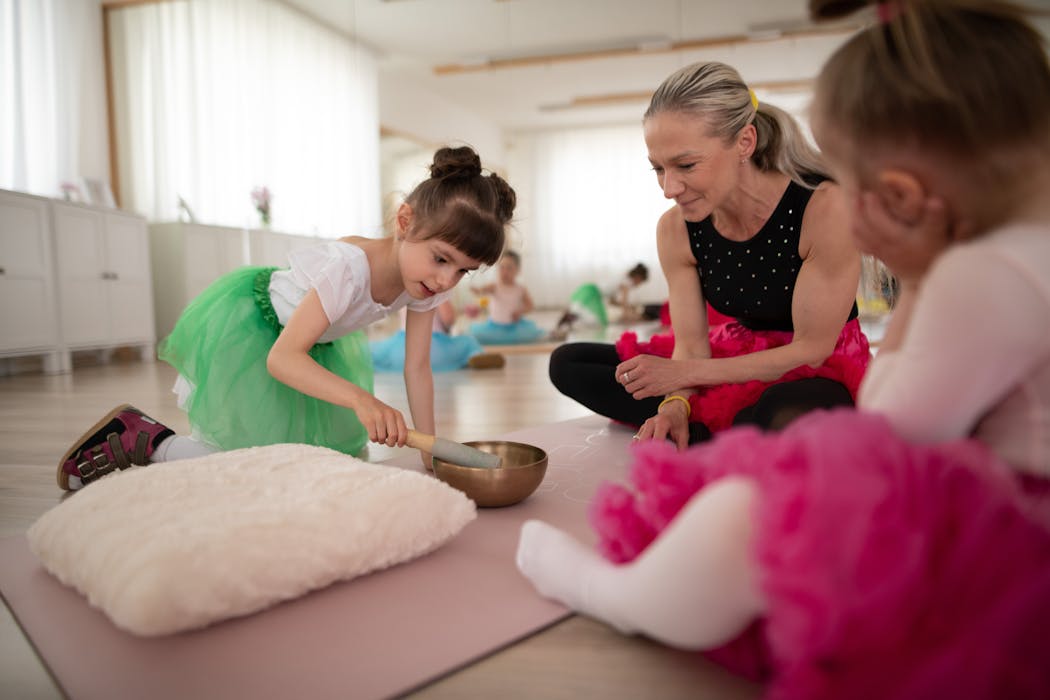Dance therapy, also known as dance movement therapy, is a form of therapy that uses movement and dance to promote emotional, social, cognitive, and physical integration of the individual. It is based on the belief that the body and mind are interconnected, and that movement can be used as a tool for self-expression and communication. Dance therapy can be practiced in a variety of settings, including hospitals, mental health facilities, schools, and community centers. It is often used as a complementary treatment for individuals with physical, emotional, or psychological challenges. The practice of dance therapy is rooted in the idea that movement can be a powerful tool for healing and self-discovery.
Dance therapy is a holistic approach to wellness that addresses the physical, emotional, and social needs of the individual. It can be used to help individuals of all ages and abilities, and can be tailored to meet the specific needs of each person. Dance therapy sessions may include a combination of movement exercises, improvisation, choreography, and group dances. The therapist may also incorporate music, props, and other sensory stimuli to enhance the experience. Dance therapy is often used as a form of self-expression and communication, allowing individuals to explore their thoughts and feelings through movement. It can also be used to improve physical fitness, coordination, and flexibility. Overall, dance therapy is a versatile and effective form of therapy that can benefit individuals in a variety of ways.
The Physical Benefits of Dance Therapy
Dance therapy offers a wide range of physical benefits for individuals of all ages and abilities. One of the primary physical benefits of dance therapy is improved physical fitness. Dance therapy sessions often involve a combination of aerobic and anaerobic exercises, which can help improve cardiovascular health, muscle strength, and endurance. Additionally, dance therapy can help improve coordination, balance, and flexibility, which can be especially beneficial for individuals with physical disabilities or limitations. The repetitive movements involved in dance therapy can also help improve motor skills and muscle memory.
In addition to improving physical fitness, dance therapy can also help reduce pain and tension in the body. The rhythmic movements and music used in dance therapy can help individuals relax and release tension in their muscles. This can be especially beneficial for individuals with chronic pain conditions or those recovering from injuries. Dance therapy can also help improve posture and body awareness, which can help prevent injuries and improve overall physical well-being. Overall, the physical benefits of dance therapy are numerous and can have a positive impact on an individual’s overall health and wellness.
The Emotional and Psychological Benefits of Dance Therapy
Dance therapy offers a wide range of emotional and psychological benefits for individuals of all ages and abilities. One of the primary emotional benefits of dance therapy is stress reduction. The rhythmic movements and music used in dance therapy can help individuals relax and reduce feelings of anxiety and stress. This can be especially beneficial for individuals with mental health conditions such as depression or anxiety. Dance therapy can also help individuals improve their self-esteem and self-confidence. The act of moving and expressing oneself through dance can help individuals feel more empowered and in control of their emotions.
In addition to reducing stress and improving self-esteem, dance therapy can also help individuals process and express their emotions in a healthy way. The movement-based nature of dance therapy allows individuals to express themselves non-verbally, which can be especially beneficial for those who have difficulty expressing themselves through words. Dance therapy can also help individuals develop a greater sense of self-awareness and self-acceptance, which can lead to improved mental well-being. Overall, the emotional and psychological benefits of dance therapy are significant and can have a positive impact on an individual’s overall mental health.
The Social Benefits of Dance Therapy
Dance therapy offers a wide range of social benefits for individuals of all ages and abilities. One of the primary social benefits of dance therapy is improved communication and interpersonal skills. The group-based nature of dance therapy allows individuals to interact with others in a supportive and non-judgmental environment. This can help individuals develop greater social skills and build meaningful connections with others. Dance therapy can also help individuals develop a greater sense of empathy and understanding towards others, which can lead to improved relationships and social interactions.
In addition to improving communication and interpersonal skills, dance therapy can also help individuals develop a greater sense of community and belonging. The group-based nature of dance therapy allows individuals to connect with others who share similar experiences and challenges. This sense of community can provide individuals with a greater sense of support and understanding, which can be especially beneficial for those who may feel isolated or alone. Overall, the social benefits of dance therapy are significant and can have a positive impact on an individual’s overall social well-being.
How Dance Therapy Can Help with Specific Conditions
Dance therapy can be used to help individuals with a wide range of specific conditions. For example, dance therapy has been shown to be effective in helping individuals with autism spectrum disorders improve their social skills, communication abilities, and emotional regulation. Additionally, dance therapy has been shown to be beneficial for individuals with Parkinson’s disease by improving balance, coordination, and mobility. Dance therapy has also been used to help individuals with eating disorders develop a healthier relationship with their bodies and food.
In addition to these specific conditions, dance therapy can also be beneficial for individuals with mental health conditions such as depression, anxiety, PTSD, and schizophrenia. The movement-based nature of dance therapy allows individuals to express themselves in a non-verbal way, which can be especially beneficial for those who have difficulty expressing themselves through words. Overall, dance therapy is a versatile form of therapy that can be tailored to meet the specific needs of each individual.
Incorporating Dance Therapy into Your Wellness Routine
Incorporating dance therapy into your wellness routine can be a great way to improve your overall health and well-being. There are many ways to incorporate dance therapy into your routine, including attending group classes or workshops, working with a private dance therapist, or practicing on your own at home. Many community centers, gyms, and mental health facilities offer dance therapy classes that are open to individuals of all ages and abilities.
If you are interested in incorporating dance therapy into your wellness routine, it is important to find a qualified dance therapist who has experience working with individuals with similar needs or conditions as your own. It is also important to find a safe and supportive environment where you feel comfortable expressing yourself through movement. Additionally, it is important to set realistic goals for yourself and be patient with the process. Overall, incorporating dance therapy into your wellness routine can be a fun and effective way to improve your overall health and well-being.
The Power of Movement for Healing
In conclusion, dance therapy is a powerful form of therapy that offers a wide range of physical, emotional, psychological, and social benefits for individuals of all ages and abilities. The practice of dance therapy is rooted in the belief that movement can be used as a tool for healing and self-discovery. Dance therapy can be used to help individuals with a wide range of specific conditions, including autism spectrum disorders, Parkinson’s disease, eating disorders, and mental health conditions.
Incorporating dance therapy into your wellness routine can be a great way to improve your overall health and well-being. Whether you attend group classes or workshops, work with a private dance therapist, or practice on your own at home, there are many ways to incorporate dance therapy into your routine. Overall, the power of movement for healing is significant, and dance therapy is an effective form of therapy that can benefit individuals in a variety of ways.
Find out how Torongo Therapyplus can help you with your needs. Get in touch with us at smile@torongo.life, or call us on 02 8809 9965.































